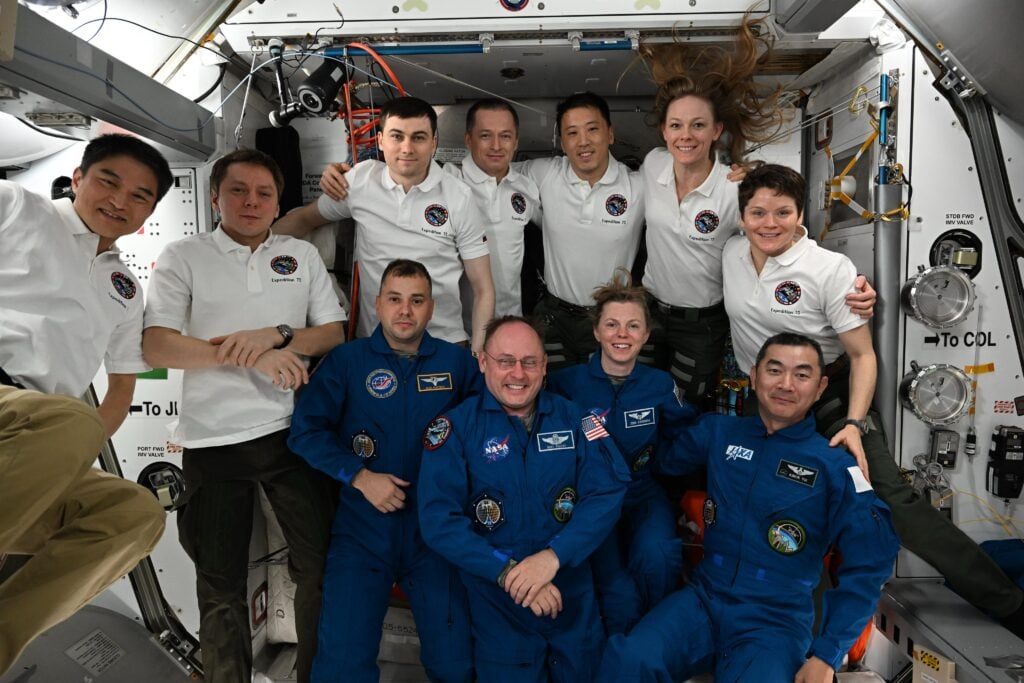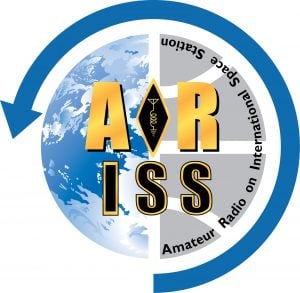In this edition:
* CubeSats to Deploy from ISS on September 19
* Register Now – AMSAT Symposium Prices Increase September 16
* AMSAT Board of Directors Election Ends September 15, 2025
* FCC Grants AST SpaceMobile Limited Use of Amateur Radio Band
* ARRL Lab Helps Radio Amateurs Avoid Interfering With US Space Force Radar
* Changes to AMSAT-NA TLE Distribution
* Space Station’s Silver Jubilee Celebrated with Silver Research
* ARISS News
* AMSAT Ambassador Activities
* Satellite Shorts From All Over
The AMSAT® News Service bulletins are a free, weekly news and information service of AMSAT, the Radio Amateur Satellite Corporation. ANS publishes news related to Amateur Radio in Space including reports on the activities of a worldwide group of Amateur Radio operators who share an active interest in designing, building, launching and communicating through analog and digital Amateur Radio satellites.
The news feed on http://www.amsat.org publishes news of Amateur Radio in Space as soon as our volunteers can post it.
Please send any amateur satellite news or reports to: ans-editor [at] amsat.org
Sign up for free e-mail delivery of the AMSAT News Service Bulletins via the ANS List; to join this list see: https://mailman.amsat.org/postorius/lists/ans.amsat.org/
CubeSats to Deploy from ISS on September 19
JAXA, the Japan Aerospace Exploration Agency, has announced that five Japanese CubeSats will be deployed from the International Space Station (ISS) on September 19 (though the date and time of the deployment are subject to change due to the ISS schedule modification). The deployment event for those satellites will be broadcast via YouTube JAXA Channel. Four of the CubeSats, carrying scientific and educational payloads, will operate in the amateur bands, and radio amateurs around the world are invited to participate in the projects:
GHS-01 is a 2U size CubeSat equipped with a camera for photographing the earth, a sensor for checking the state of the satellite, and an attitude control device. In response to commands from the ground station, the satellite-mounted camera photographs the earth from space and transmits the image data to the ground. In order for amateur radio users around the world to voluntarily acquire image data taken by this satellite by radio, the date and time of image transmission will be published on the website https://gifuhs2022.wordpress.com/. Also, the satellite carries a digitalker mission. Audio data is transmitted from a ground station and stored in the satellite. The voice data is transmitted from the satellite as an analog FM voice signal, and a message is broadcast from space. The date and time the message will be sent will be published on the website. The satellite was built by Gifu University with technical cooperation for using satellite radio waves with sister schools of universities and high schools such as Lithuania, Australia, Kenya, South Korea, and Taiwan. A downlink on 437.090 MHz has been coordinated with 20 wpm CW, 1k2 AFSK, 9k6 GMSK and digitalker voice.
DRAGONFLY, coordinated by Kyushu Institute of Technology, is part of the Joint Global Multi-Nation Birds Satellite project, BIRDS-X, and funded by Amateur Radio Digital Communications in the U.S. The 2U CubeSat will carry APRS digipeaters on 145.825 MHz, as well as a Store and Forward messaging system. In addition to the VHF APRS frequency, a UHF downlink for CW beacon and telemetry using 4k8 GMSK will transmit at 437.375 MHz. A ground terminal competition will be held on DRAGONFLY. More information is available at https://birds-x.birds-project.com/
STARS-Me2, a 1U CubeSat built by Shizuoka University features an earth observation camera, but the real experimentation takes place on the AX.25 radio downlinks on which those photos are transmitted back to earth. Reception success rates at receiving ground stations will be measured at baud rates of 1.2kbps, 9.6kbps and 115.2kbps. The coding gain of the error correction scheme will be measured on the downlinks. And the reception performance with polarization diversity at multiple terrestrial receiver stations (developed by amateur radio operators) will be evaluated. The goal is to learn more about how large data sets, such as images, are best transmitted from space. UHF downlinks with CW, 1k2 AFSK, 9k6 FSK and 115.2 bps GMSK are coordinated for 437.350 MHz, 437.400 MHz and 437.200 MHz.
RSP-03 is also a 1U CubeSat carrying a camera, but in this case the camera will not be aimed at earth, but at the stars. The main mission is to capture the star data by camera, convert it to “audible data,” and deliver the audio to the ground as a “Stellar Symphony.” After acquiring data of stars and constellations captured by the onboard camera an on-board AI will compose sounds from the star data and transmit it to the ground via an FM Digi-talker. In addition, digital data will be sent using various baud rates and modulation modes, and a digital “QSL card,” stored on the satellite before launch will be transmitted via SSTV after amateurs have uploaded their callsigns from the ground. A downlink at 437.050 MHz will be shared by the FM Digi-talker, 1200 BPS (AFSK on FM), 9600 BPS (GMSK), and 24000 BPS (4FSK, OQPSK). Details are at https://rsp03.rymansat.com/en.
[ANS thanks Masa Arai, JN1GKZ, IARU, and JAXA for the above information.]
Your 2025 AMSAT President’s Club Coin Is Waiting!
Celebrating the 40th Anniversary of Amateur Radio on Human Spaceflight
Help Support GOLF and Fox Plus.
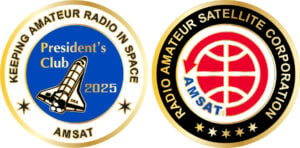
Join the AMSAT President’s Club today and help
Keep Amateur Radio in Space!
https://www.amsat.org/join-the-amsat-presidents-club/
Register Now – AMSAT Symposium Prices Increase September 16
Discounted registration for the 2025 AMSAT Symposium, to be held October 17-19, 2025 in Phoenix, AZ will be available through September 15th. Prices increase on September 16th.
Credit: Holiday Inn Suites Phoenix Airport North
For details, visit https://www.amsat.org/43rd-amsat-space-symposium-and-annual-general-meeting/ .
Proposals for Symposium papers and presentations are invited on any topic of interest to the amateur satellite community. We request a tentative title of your paper or presentation as soon as possible, with final copy submitted by October 8th for inclusion in the Symposium Proceedings.
Proposals for presentations at the Symposium do not require a paper. Presentations will be recorded and made available on AMSAT’s YouTube Channel and transcribed and published with its slides in the Proceedings.
Proposals should be sent to Frank Karnauskas, N1UW via f.karnauskas [at] amsat [dot] org .
[ANS thanks AMSAT for the above information.]
AMSAT Board of Directors Election Ends September 15, 2025
Four seats on the Board of Directors are up for election this year. The four candidates receiving the largest number of votes shall be declared elected to the seats and the candidate receiving the next largest number of votes shall be declared the First Alternate. Members’ opportunity to vote ends on Monday September 15, 2025. Results will be announced no later that September 30, 2025.
The following candidates who have been duly nominated are as follows:
Barry Baines, WD4ASW
Jerry Buxton, NØJY
Drew Glasbrenner, KO4MA
Frank Karnauskas, N1UW
Douglas Tabor, N6UA
AMSAT members may review the candidate statements and cast their ballots at https://launch.amsat.org/2025-BoD-Election .
[ANS thanks Douglas Tabor, N6UA, AMSAT Secretary, for the above information.]
AMSAT Remove Before Flight Key Tags Now Available
Yes, These are the Real Thing!

Your $20 Donation Goes to Help Fly a Fox-Plus Satellite
Includes First Class Postage (Sorry – U.S. Addresses Only)
Order Today at https://www.amsat.org/product/amsat-remove-before-flight-keychain
FCC Grants AST SpaceMobile Limited Use of Amateur Radio Band
The FCC Space Bureau has granted a license to AST & Science LLC (operating as AST Space Mobile) for using the 430 — 440 MHz amateur radio allocation for TT&C operations for 20 additional satellites.
The FCC Space Bureau commented: “At this time, to address the concerns raised by amateur radio operators and the petitioner, we issue a limited grant to AST to conduct emergency operations in the 430–440 MHz bandwhen no other bands are available for the 20 additional satellites authorized herein for a period not to exceed 24 hours.”
This decision is the result of over 2500 comments to the FCC by the American Radio Relay League (ARRL) and several International Amateur Radio Union (IARU) member societies, AMSAT, and individual amateur radio operators. The IARU maintains its view that the use of Article 4.4 of the ITU Radio Regulations is inappropriate in this matter, in particular as there are existing allocations in the UHF spectrum for Telemetry, Tracking and Command (TT&C) operations. There are no technical or operational requirements for AST & Science LLC to intrude the 430–440 MHz spectrum which is a primary amateur and amateur satellite service allocation in ITU Region 1 and in several countries in Region 2.
The IARU and its member societies will continue to monitor the further development of this issue. As a sector member of ITU‑R, the IARU will contribute towards improving the respective process concerning Article 4.4.
The IARU is grateful for the support and contributions from our member-societies.
[ANS thanks IARU for the above information.]
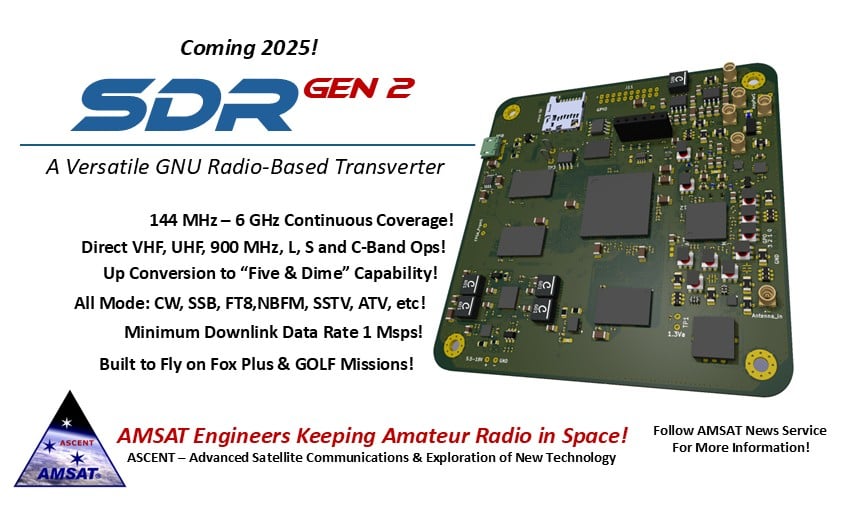
ARRL Lab Helps Radio Amateurs Avoid Interfering With US Space Force Radar
US Space Command headquarters is being moved to Huntsville, Alabama, known as “Rocket City USA.” The move was announced in a press conference on September 2, 2025. Huntsville will host the 2026 ARRL National Convention as part of the Huntsville Hamfest, but there’s a bigger connection between U.S. Space Command and amateur radio.
Space Command utilizes forces such as the US Space Force to accomplish its command mission. The ARRL Lab supports the U.S. Space Force’s Phased Array Warning System (PAVE PAWS) early warning radar installations which scan the skies for incoming missiles and space junk.
Since 2007, the ARRL Lab has been conducting this crucial analysis using Longley-Rice terrain modeling to determine if an amateur fixed station, repeater, or EME station is eligible for a waiver to be granted by the military to run more than the 50 watts of RF power on the 70-centimeter band currently allowed with a 100-mile radius of either the Cape Cod Air Force Station in Massachusetts, or Beale Air Force Base in California. “We want to ensure that amateurs can exercise as many operating privileges as possible, while understanding the need for the Space Force to operate without interference,” said ARRL Lab Manager George Spatta, W1GKS.
The reports provided to the Space Force advise a “cone of protection” in azimuth and elevation at which the amateur would be limited to a power level which would not interfere with the radar.
Amateurs are secondary users on the 70-centimeter band and the ARRL Lab’s cooperation with the military helps ensure we do not interfere with this vital function of our nation’s security. As of this writing, the Lab is conducting this analysis for two different waiver requests. “It is an important part of the work we do to serve radio amateurs,” said Spatta.
[ANS thanks ARRL for the above information.]
Want to fly the colors on your own grid expedition?
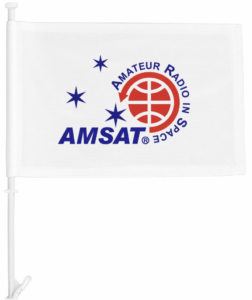
Get your AMSAT car flag and other neat stuff from our Zazzle store!
25% of the purchase price of each product goes towards
Keeping Amateur Radio in Space
https://www.zazzle.com/amsat_gear
Changes to AMSAT TLE Distribution for September 12
Two Line Elements or TLEs, often referred to as Keplerian elements or keps in the amateur community, are the inputs to the SGP4 standard mathematical model of spacecraft orbits used by most amateur tracking programs. Weekly updates are completely adequate for most amateur satellites. TLE bulletin files are updated daily in the first hour of the UTC day. New bulletin files will be posted immediately after reliable elements become available for new amateur satellites. More information may be found at https://www.amsat.org/keplerian-elements-resources/.
EIRSAT-1 NORAD Cat ID 58472 Decayed from orbit on or about 5 September 2025
[ANS thanks Joe Fitzgerald, KM1P, AMSAT Orbital Elements Manager for the above information.]
Space Station’s Silver Jubilee Celebrated with Silver Research
This November marks a quarter century of continuous human presence aboard the International Space Station, which has served as a springboard for developing a low Earth economy and NASA’s next great leaps in exploration, including human missions to the Moon and Mars. To kick off the orbiting laboratory’s silver 25th anniversary countdown, here are a few silver-themed science investigations that have advanced research and space exploration.
Antimicrobial properties
Silver has been used for centuries to fight infection, and researchers use its unique properties to mitigate microbial growth aboard the space station. Over time, microbes form biofilms, sticky communities that can grow on surfaces and cause infection. In space, biofilms can become resistant to traditional cleaning products and could infect water treatment systems, damage equipment, and pose a health risk to astronauts. The Bacterial Adhesion and Corrosion investigation studied the bacterial genes that contribute to the formation of biofilms and tested whether a silver-based disinfectant could limit their growth.
Another experiment focused on the production of silver nanoparticles aboard the space station. Silver nanoparticles have a bigger surface-to-volume ratio, allowing silver ions to come in contact with more microbes, making it a more effective antimicrobial tool to help protect crew from potential infection on future space missions. It also evaluated whether silver nanoparticles produced in space are more stable and uniform in size and shape, characteristics that could further enhance their effectiveness.
Wearable tech
Silver is a high-conductivity precious metal that is very malleable, making it a viable option for smart garments. NASA astronauts aboard the orbiting laboratory tested a wearable monitoring vest with silver-coated sensors to record heart rates, cardiac mechanics, and breathing patterns while they slept. This smart garment is lightweight and more comfortable, so it does not disturb sleep quality. The data collected provided valuable insight into improving astronauts’ sleep in space.
Silver crystals
In microgravity, there is no up or down, and weightlessness does not allow particles to settle, which impacts physical and chemical processes. Researchers use this unique microgravity environment to grow larger and more uniform crystals unaffected by the force of Earth’s gravity or the physical processes that would separate mixtures by density. The NanoRacks-COSMOS investigation used the environment aboard the station to grow and assess the 3D structure of silver nitrate crystals. The molecular structure of these superior silver nitrate crystals has applications in nanotechnology, such as creating silver nanowires for nanoscale electronics.
[ANS thanks NASA for the above information.]
ARISS NEWS
Amateurs and others around the world may listen in on contacts between amateurs operating in schools and allowing students to interact with astronauts and cosmonauts aboard the International Space Station. The downlink frequency on which to listen is 145.800 MHz worldwide.
RECENTLY COMPLETED
Taka Town Board of Education Children’s Future Division, Taka Town, Japan, direct via JA3YRL
The ISS callsign is presently scheduled to be OR4ISS
The scheduled crewmember is Kimiya Yui KG5BPH
The ARISS mentor is 7M3TJZ
Contact was successful: Thu 2025-09-11 09:22:34 UTC 45 degrees elevation
UPCOMING
National Space Research and Development Agency (NASRDA), Abuja, Nigeria, telebridge via ZS6JON
The ISS callsign is presently scheduled to be NA1SS
The scheduled crewmember is Zena Cardman KJ5CMN
The ARISS mentor is IN3GHZ
Contact is go for: Sat 2025-09-20 09:37:23 UTC 83 degrees elevation
The crossband repeater continues to be active (145.990 MHz up {PL 67} & 437.800 MHz down). If any crewmember is so inclined, all they have to do is pick up the microphone, raise the volume up, and talk on the crossband repeater. So give a listen, you just never know.
The packet system is also active (145.825 MHz up & down).
As always, if there is an EVA, a docking, or an undocking; the ARISS radios are turned off as part of the safety protocol. Scheduled radio power down and power up times:
Sat 2025-09-13 12:40 UTC Power Down due to Progress 93P Arrival
Sun 2025-09-14 14:05 UTC Power Up due to Progress 93P Arrival
Note, all times are approximate. It is recommended that you do your own orbital prediction or start listening about 10 minutes before the listed time.
The latest information on the operation mode can be found at https://www.ariss.org/current-status-of-iss-stations.html
The latest list of frequencies in use can be found at https://www.ariss.org/contact-the-iss.html
[ANS thanks Charlie Sufana, AJ9N, one of the ARISS operation team mentors for the above information.]
AMSAT Ambassador Activities
AMSAT Ambassadors provide presentations, demonstrate communicating through amateur satellites, and host information tables at club meetings, hamfests, conventions, maker faires, and other events.
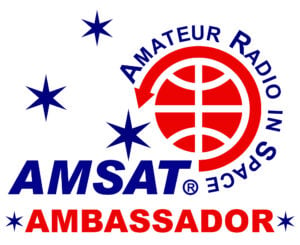
Ambassador Clint Bradford, K6LCS, writes…
“My 184th “How to Work the Easy Satellites” presentation was to a wonderful club last night: the Lapeer County ARA in Michigan. Email received this morning:
‘Hi, Clint~I want to thank you for your presentation last night for our club meeting. We had many good comments afterward and I hope it has inspired more of our members to give satellites a try. I was surprised how much research you did on Lapeer and the photos/graphics you put together to personalize your presentation for us. We will be having our annual picnic in a couple of weeks and we will be demonstrating with the Arrow and Elk antennas with a variety of radios and letting members make contacts. Hopefully we’ll get several good runs that afternoon. Again, I appreciate the effort you put into your presentation. Well done! 73, Viki Clark, N8VLC'”
October 11, 2025
North Star Radio Convention & ARRL Minnesota State Convention
Hennepin Technical College
9000 Brooklyn Boulevard
Brooklyn Park, MN 55445
https://northstarradio.org/
ADØHJ
October 16, 17, 18, 19, 2025
AMSAT Board of Directors Meeting and 43rd Annual AMSAT Space Symposium & Annual General Meeting
Holiday Inn & Suites Phoenix Airport North
1515 North 44th Street
Phoenix, Arizona 85008
Details at https://www.amsat.org/2025-symposium/
[ANS thanks Bo Lowrey, W4FCL, Director – AMSAT Ambassador Program, for the above information.]
Satellite Shorts From All Over
+ Alex Shovkoplyas, VE3NEA, has developed a Windows program — SkyRoof — that combines satellite tracking and SDR functions in one application. Those using SDRs as receivers for satellite downlinks can now see all satellite traces on the waterfall labeled with satellite names and the boundaries of the transponder on screen. The program follows the Doppler shift, and all frequency tuning is done visually, with a mouse. Provision is made for CAT control of a separate external uplink transceiver. Full information at https://ve3nea.github.io/SkyRoof/index.html (ANS thanks Tom Schuessler, N5HYP, for the above information.)
+ Rolling across the rugged, rusty red terrain on Mars, NASA’s Perseverance rover came upon some rocks with peculiar green, blue, black and white dots. After detailed image analysis, scientists have come to a potentially encouraging conclusion: If those speckled rocks were formed like they are on Earth, they might be evidence of past life on the dusty planet. The rocks “very well could be the clearest sign of life that we’ve ever found on Mars, which is incredibly exciting,” acting NASA administrator Sean P. Duffy said in a news conference Wednesday. The findings were published in the journal Nature on September 10. (ANS thanks The Washington Post for the above information. Full article at https://wapo.st/4mapyHQ.)
+ “The Most Important Satellite You’ve (Probably) Never Heard Of,” a video produced as part of the PBS Space Time series, is available at https://www.youtube.com/watch?v=HlNKj0K_3FY (ANS thanks The Orbital Index and PBS for the above information.)
+ Xiamen Radtel Electronics Co., Ltd. of Fujian, China has introduced a 12-watt FM VHF/UHF hand-held transceiver which they claim will operate in full duplex across bands. Full duplex is preferred for satellite operation and is rarely offered in handheld radios. The radio also includes reception of AM aircraft frequencies and wide-band commercial FM broadcast frequencies. The Radtel R8000 sells for less than $120 U.S. Another model, the Radtel RT-69, adds GPS and the 222 MHz band, as well as some shortwave SWL coverage. It sells for less than $200 U.S. Details at http://bit.ly/4ph72QT (ANS thanks Clint Bradford, K6LCS, for the above information.)
+ The Consultative Committee for Space Data Systems (CCSDS) is a multi-national forum for the development of communications & data systems standards for spaceflight. An announcement about a competition to help develop new CCSDS protocols will be made at the AMSAT-UK Colloquium 2025 by Matt Cosby, CTO of Goonhilly Earth Station. Further details will be provided in his talk on Saturday 11 October from 15:15 to 16:00, titled “Challenges in Deep Space Communications – and how this community can contribute.“ Details will also be posted on social media after the presentation. The event will be streamed by the BATC at https://amsat-uk.org/. (ANS thanks Dave Johnson, G4DPZ, Hon. Sec. AMSAT-UK, for the above information.)
Join AMSAT today at https://launch.amsat.org/
In addition to regular membership, AMSAT offers membership to:
* Societies (a recognized group, clubs or organization).
* Primary and secondary school students are eligible for membership at one-half the standard yearly rate.
* Post-secondary school students enrolled in at least half time status shall be eligible for the student rate for a maximum of 6 post-secondary years in this status.
* Memberships are available for annual and lifetime terms.
Contact info [at] amsat.org for additional membership information.
73 and remember to help Keep Amateur Radio in Space!
This week’s ANS Editor, Mark Johns, KØJM
mjohns [at] amsat.org
ANS is a service of AMSAT, the Radio Amateur Satellite Corporation, 712 H Street NE, Suite 1653, Washington, DC 20002
AMSAT is a registered trademark of the Radio Amateur Satellite Corporation.

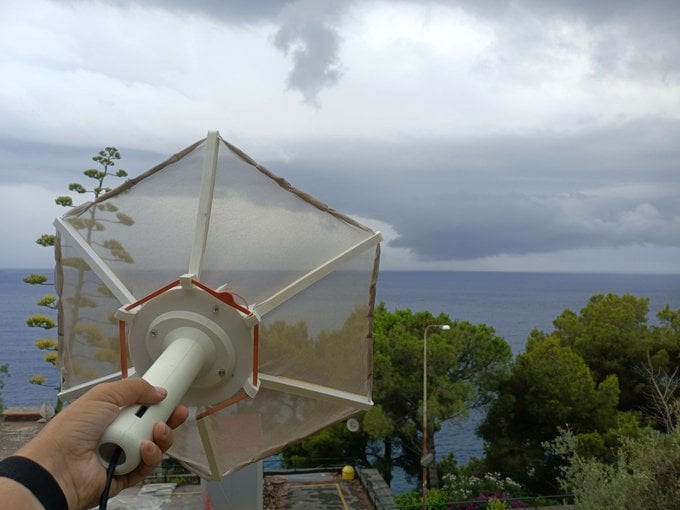
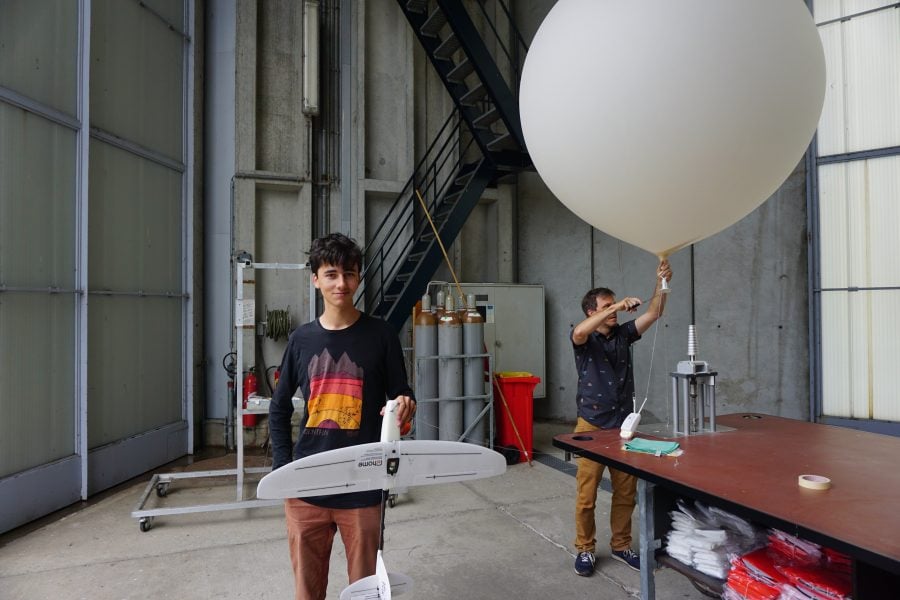
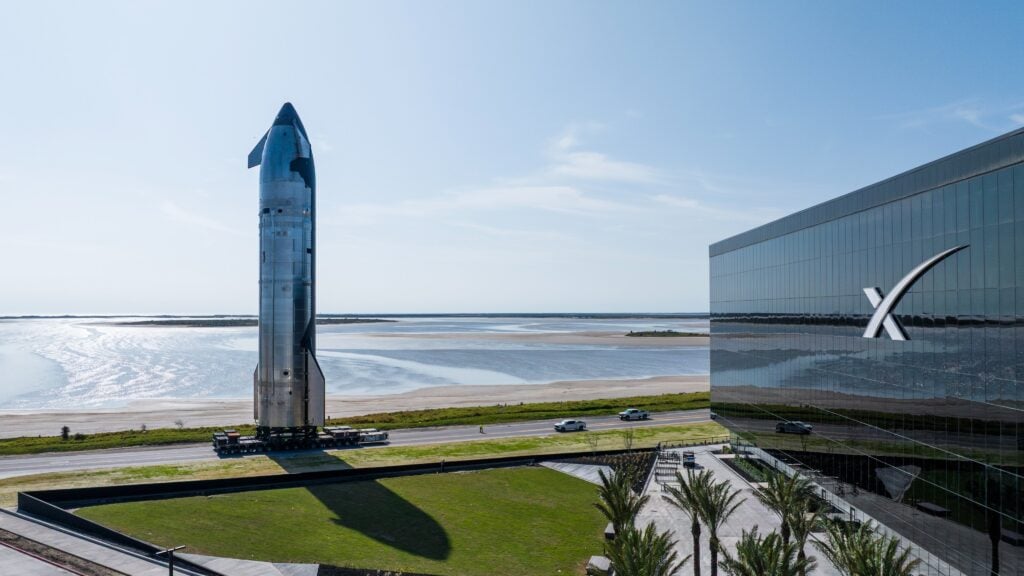
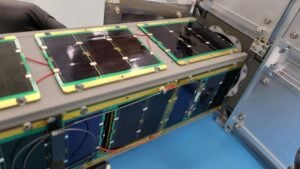
 Purchase M2 LEO-Packs from the AMSAT Store.
Purchase M2 LEO-Packs from the AMSAT Store. 




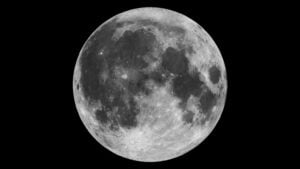 (Photo credit: NASA)
(Photo credit: NASA)